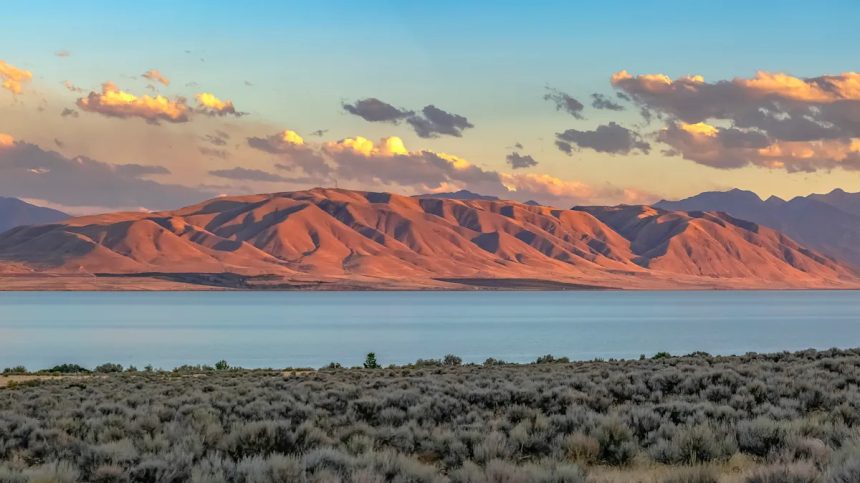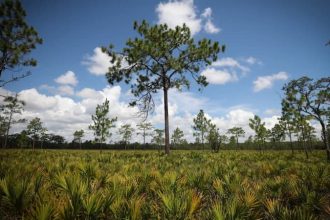Aside from being one of the most snake-filled lakes in the state, Utah Lake is also far from a pristine recreation spot. The Utah Department of Environmental Quality monitors it continuously for harmful algal blooms (HABs) and waterborne pathogens, and the most recent news is pretty grim. At the time of writing, the state has warned of HABs present here. The current status is actually a warning advisory, which means you should not swim or water ski on the lake.
These algal blooms are actually colonies of cyanobacteria (aka blue-green algae), which can produce toxins that are harmful to people and pets. Side effects from exposure to these can include kidney and liver damage, neurological effects, gastrointestinal illness, and even death in severe cases. Even getting the cyanobacteria on your skin can cause irritation. Pets and children are especially at risk, as they are more likely to drink the water and are more sensitive to the effects than adults.
Beyond the blooms, Utah Lake has a long history of nutrient pollution. It’s classified as hypereutrophic, meaning it has excessive nutrient levels (such as nitrogen and phosphorus) that feed algae growth. The lake has been reported as impaired under the water-quality law for phosphorus, dissolved solids, and high algae load in cycles for years. Because of all this, it’s not usually reliable as a place for recreational swimming. So visitors to Utah should always err on the side of caution and check into advisories before getting onto or into the water.
Read more: The 5 Most Alligator-Filled Destinations In All Of Florida
What visitors need to know about Lake Utah
view of Mirror Lake through the trees with mountains in background – Amy Sparwasser/Getty Images
It’s tempting to see a stretch of blue water on a hot day and think, “This is a perfect swim stop.” But Utah Lake is sadly not a great choice. While it’s generally good practice to avoid swimming in any lake after heavy rainfall, Utah Lake is often under advisement regardless of recent weather.
Locals know to keep their recreation at Utah Lake to dry land or boats. Fishing is possible but only with extra precautions: clean any catch thoroughly, discard the guts, and avoid eating fish from visibly scummy areas. If you aren’t sure what to look for, Utah’s DEQ website has photo examples of harmful algal blooms. Pet owners, especially dog parents, should be vigilant to keep their furry besties away from the water as well. Dogs are more likely to get cyanotoxin poisoning because they drink or lick contaminated water. If your dog does come into contact with any scummy water, be sure to rinse them well with fresh water right away.
If you want to enjoy Utah’s outdoors safely, the state offers plenty of cleaner alternatives. Visitors may want to instead plan a visit to Bear Lake, a state park lake so vibrantly blue it’s known as the Caribbean of the Rockies. Mirror Lake also offers lake recreation as well as a camping area. Reservoirs like Deer Creek, Echo, or Jordanelle, both managed for recreation, are typically monitored and meet water-quality standards far above Utah Lake’s. Scientists and local agencies are still working to restore its unfolding balance. But for now, visitors should think of it less as a swimming hole and more as a living case study in how fragile freshwater systems can be when nutrient pollution goes unchecked.
Ready to discover more hidden gems and expert travel tips? Subscribe to our free newsletter and add us as a preferred search source for access to the world’s best-kept travel secrets.
Read the original article on Islands.








![CSquared Logo[1]](https://newsgrasp.xyz/wp-content/uploads/2025/08/Pan-African-Firm-Expands-Fibre-Network-Across-West-Africa-330x106.png)
